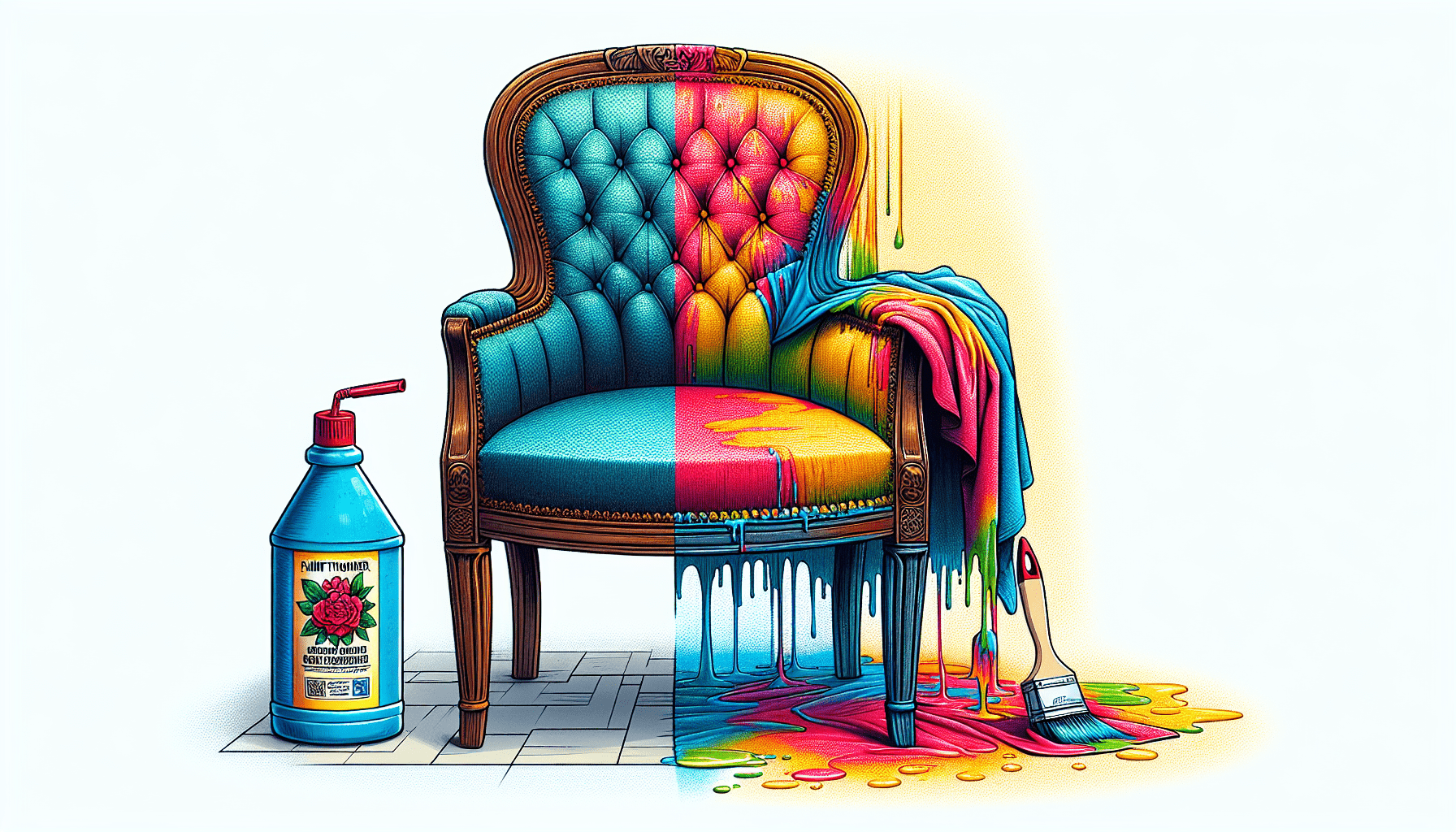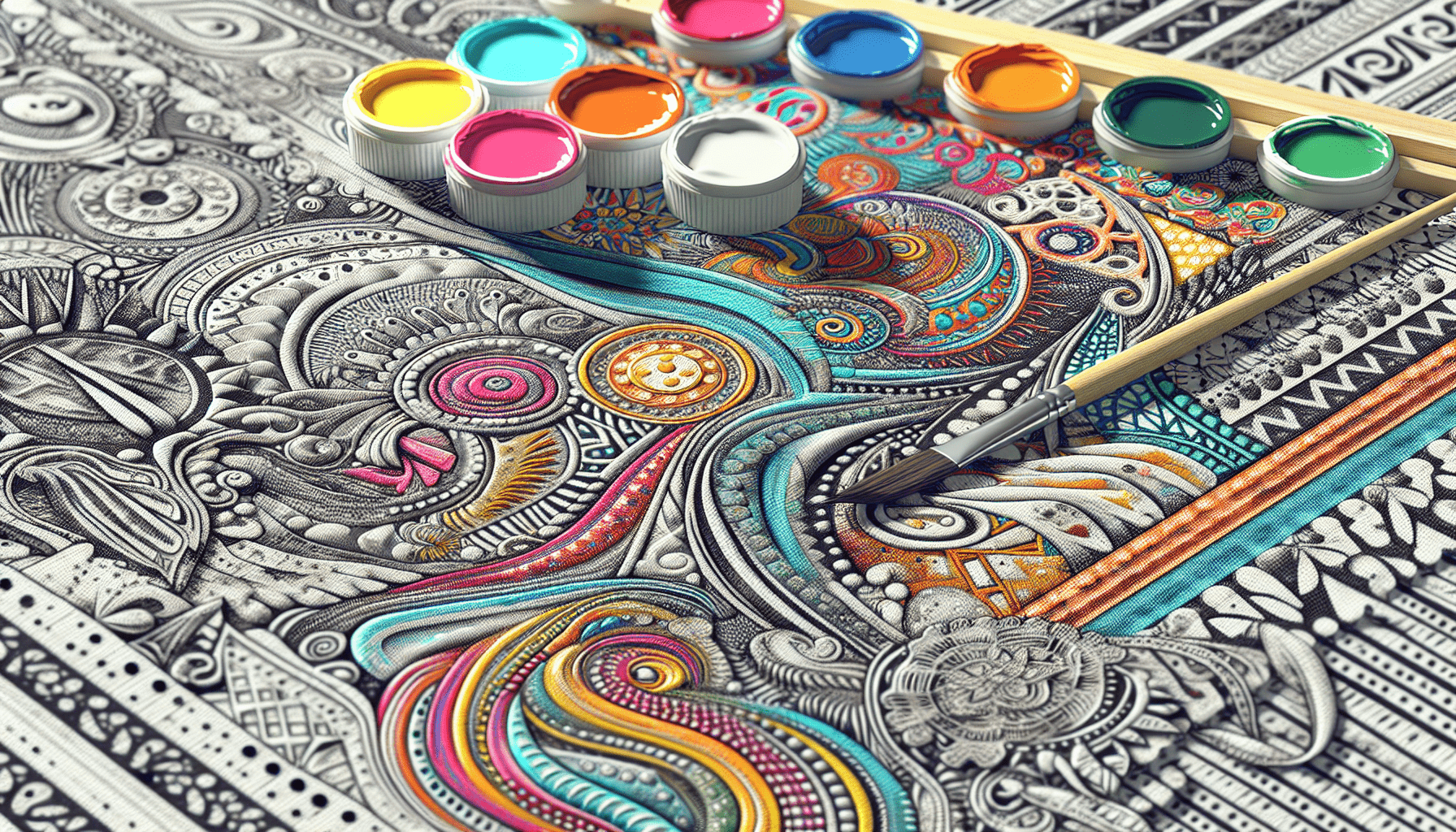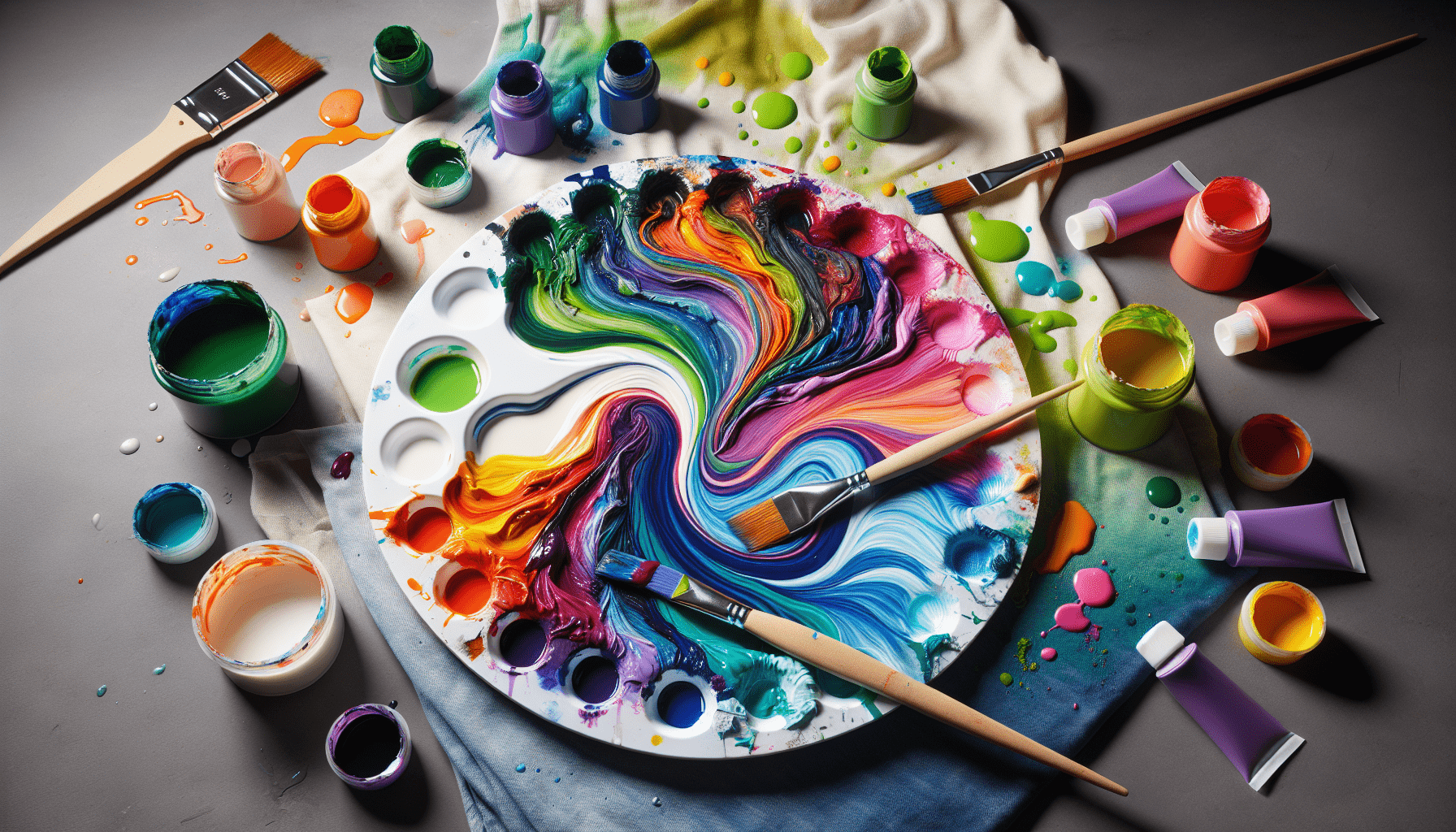Fabric painting is a popular craft that allows you to create intricate designs on various fabrics. However, waiting for fabric paint to dry can be time-consuming and frustrating. This article will provide you with effective techniques to speed up the drying process of fabric paint, enabling you to enjoy your creations sooner. Whether you are a professional artist or just starting out, these valuable tips will help you save time and achieve quicker results. So, let’s explore the world of fabric paint drying and discover how to make it dry faster.
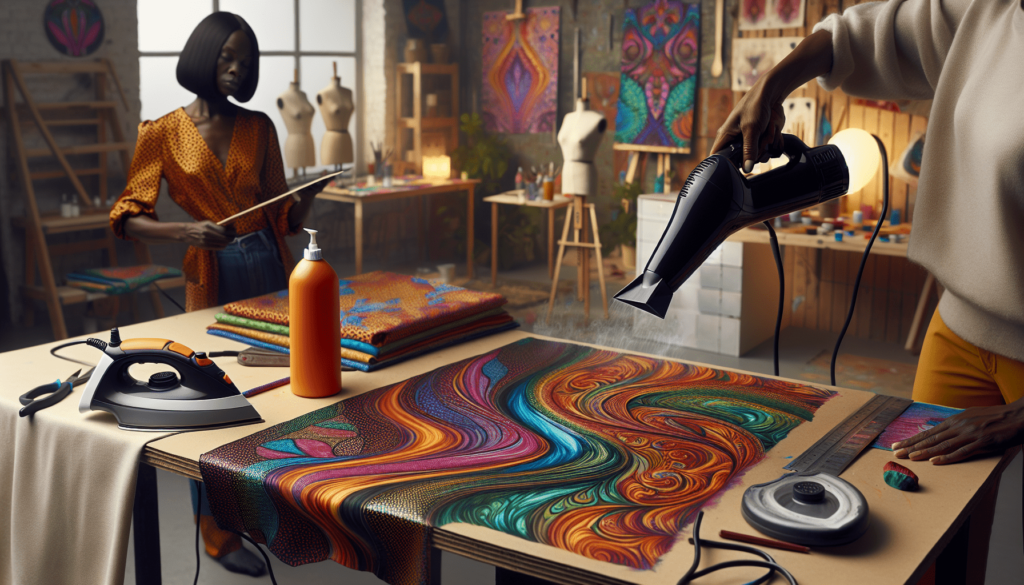
Choosing the Right Fabric Paint
When it comes to choosing fabric paint, it’s important to consider the type of paint you are using. Different fabric paints have different drying times, so it’s essential to choose one that dries quickly. Look for fabric paints that are specifically labeled as quick-drying or fast-drying. These paints are formulated to dry in a shorter amount of time, which can be beneficial if you’re working on a time-sensitive project.
Preparing the Fabric
Before you even think about painting your fabric, it’s crucial to properly prepare it. This will help ensure that the paint adheres well and dries faster. One of the first steps in fabric preparation is washing and drying it. Washing removes any residues or chemicals that may be present on the fabric, which could hinder the drying process. After washing, make sure to dry the fabric thoroughly before you begin painting.
In addition to washing, another crucial step is ironing the fabric. Ironing helps to remove any wrinkles or creases, creating a smooth surface for painting. It also helps to activate the fibers of the fabric, which can aid in the absorption of the paint. By ironing the fabric before painting, you are helping to create a favorable environment for faster drying.
Using Heat
Applying heat to the painted fabric can significantly speed up the drying process. One way to do this is by using a hairdryer. After you have finished painting, set your hairdryer to a low heat setting and gently blow dry the painted areas. Be sure to keep the hairdryer at a safe distance from the fabric to avoid causing any damage. The heat from the hairdryer will help evaporate the moisture in the paint, resulting in faster drying times.
Another method to utilize heat is by exposing the painted fabric to direct sunlight. Place the fabric in a sunny location where it can be exposed to the natural heat of the sun. The heat from the sun will assist in drying the paint more quickly. However, it’s essential to keep in mind that prolonged exposure to sunlight can cause color fading, so monitor the fabric closely and avoid leaving it outside for an extended period.
Applying Thinner Layers
One mistake many people make when using fabric paint is applying thick layers. While it may seem like a time-saving technique, it actually slows down the drying process. Thick layers of paint take longer to dry and are more prone to cracking or peeling. To speed up drying time, apply multiple thin layers of fabric paint instead of one thick coat. This allows each layer to dry faster and reduces the overall drying time.
By applying thinner layers, you also have more control over the overall look and feel of your design. Thicker layers can sometimes result in a stiff and rubbery texture, while thin layers create a softer and more flexible finish. So not only will your fabric paint dry faster with thinner layers, but the final result will also be more visually appealing and comfortable to wear or use.
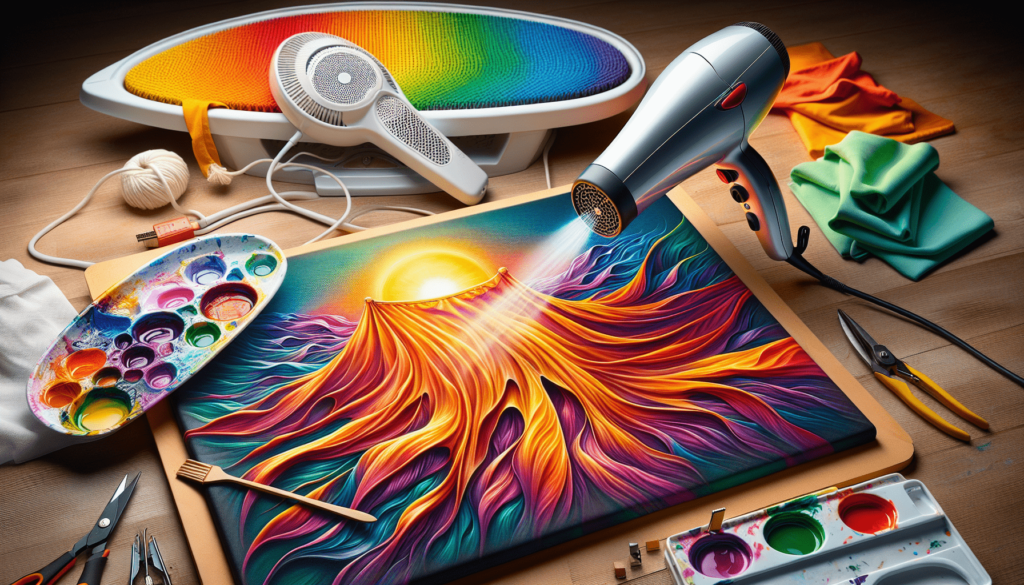
Adding an Acrylic Medium
Another technique to make fabric paint dry faster is to mix it with an acrylic medium. Acrylic mediums are additives that can be mixed with fabric paint to alter its characteristics. When the fabric paint is combined with an acrylic medium, it tends to dry faster due to the fast-drying properties of acrylics. This is especially useful if you’re working on a project with a tight deadline or need the paint to dry quickly for further application or handling.
When mixing fabric paint with an acrylic medium, follow the manufacturer’s instructions and guidelines for the proper ratio. This will ensure that you achieve the desired consistency and drying time. Experiment with different ratios and test on a small piece of fabric before applying it to your entire project to find the perfect combination that suits your needs.
Using a Fabric Paint Additive
In addition to using an acrylic medium, you may also consider using a fabric paint additive. Fabric paint additives are specifically designed to accelerate the drying time of fabric paint. These additives contain agents that help the paint evaporate moisture more quickly, reducing overall drying time. By adding a fabric paint additive to your paint, you can significantly speed up the drying process, allowing you to move on to the next steps of your project sooner.
Fabric paint additives can be easily mixed with your fabric paint according to the manufacturer’s instructions. It’s important to note that different additives may require different ratios or methods of application, so be sure to carefully read and follow the instructions provided. As with any new product, it’s recommended to test the additive on a small area of fabric before applying it to your entire project to ensure compatibility and desired results.
Using a Fabric Paint Accelerator
If you’re in need of an even quicker drying time, you might consider using a fabric paint accelerator. Fabric paint accelerators are products specifically designed to speed up the drying process of fabric paint. These accelerators typically come in spray or mist form and are applied directly to the painted fabric. The accelerator helps evaporate moisture from the paint, resulting in a faster drying time.
When using a fabric paint accelerator, it’s important to follow the instructions provided by the manufacturer. Shake the spray bottle or mist the product evenly over the painted fabric, making sure to cover all areas. To maximize the effectiveness of the accelerator, consider combining it with other drying techniques, such as heat application or proper ventilation. This will help create an optimal environment for the paint to dry quickly and efficiently.
Choosing the Right Conditions
Creating the right conditions for faster fabric paint drying is crucial. Proper ventilation is essential in ensuring that the paint dries faster and more evenly. Choose a well-ventilated area for painting, and if possible, use fans or open windows and doors to increase air circulation. Adequate ventilation helps to remove moisture from the paint, promoting faster drying times.
In addition to ventilation, the temperature and humidity of the environment can also affect drying time. Opt for a warm and dry environment, as higher temperatures and lower humidity levels facilitate faster evaporation of moisture. If necessary, you can use a dehumidifier or air conditioner to regulate the humidity and create the optimal conditions for drying your fabric paint.
Applying Heat after Drying
Once the fabric paint has dried, applying heat can help set the paint and make it more lasting. Heat setting the paint involves using an iron to activate the pigments and bond them to the fabric fibers. To heat-set the painted fabric, set your iron to the appropriate temperature for the type of fabric you are working with. Place a thin cloth or paper towel over the painted area, and gently press the heated iron on top. Move the iron across the painted fabric in a circular motion for a few minutes. This process ensures that the paint fully adheres to the fabric and is more resistant to fading or washing off.
However, it’s important to note that heat setting should be done only after the paint has completely dried. Applying heat to wet or uncured paint may cause it to smudge or spread, ruining your design. Always refer to the instructions provided by the manufacturer of the fabric paint to determine the recommended time for drying before heat setting.
Using a Fixative or Sealant
To further enhance the drying time and protect the fabric paint, you can consider applying a fixative or sealant. These products help lock in the paint and prevent it from smudging or fading over time. Fixatives and sealants are available in various forms, such as sprays or brush-on formulas.
Before applying a fixative or sealant, ensure that the fabric paint is completely dry and cured. Follow the instructions provided by the manufacturer for the specific product you are using. Apply a thin and even layer of the fixative or sealant over the painted fabric, making sure to cover all areas. Allow the product to dry according to the recommended drying time before handling or wearing the fabric.
In conclusion, there are several techniques and considerations to make fabric paint dry faster. By choosing the right fabric paint, properly preparing the fabric, using heat, applying thinner layers, adding an acrylic medium, using fabric paint additives or accelerators, choosing the right conditions, applying heat after drying, and using a fixative or sealant, you can significantly reduce drying time and achieve faster results for your fabric painting projects. Experiment with different methods and find the best combination that suits your specific needs and time constraints. With patience and the right techniques, you can create vibrant and durable designs on your fabric in no time.

